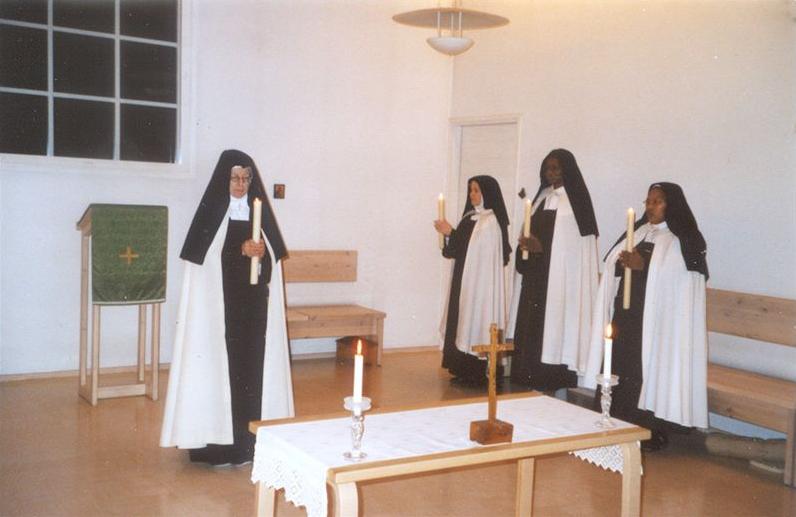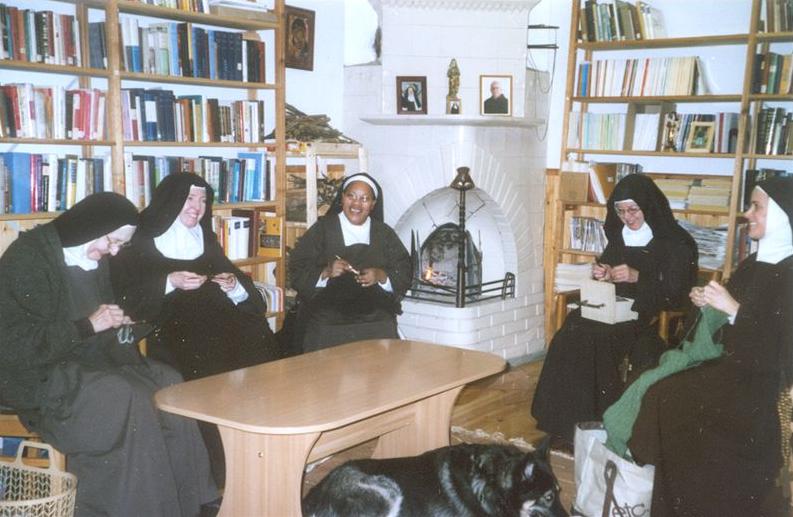
Carmel of Espoo

View of the Chapel
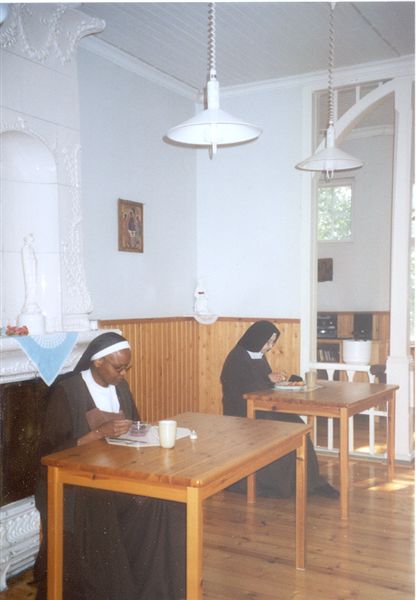
The Refectory
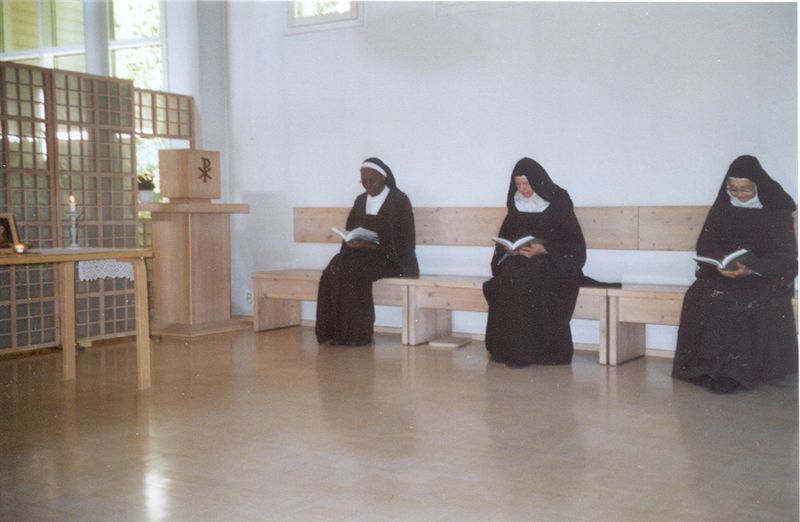
Choir
The Carmelite's main work is prayer. All other activities are done in a spirit of prayer and are secondary to the most important goal, which is union with God and which gives meaning to all work. The Carmelite nun carries the whole world in her heart. Her withdrawal from the everyday tasks of the world unites her in a deeper way to all of Christ's members when she brings them and all their needs to Him in prayer. The Carmelite Monastery in Finland is especially dedicated to praying for the people of Finland.
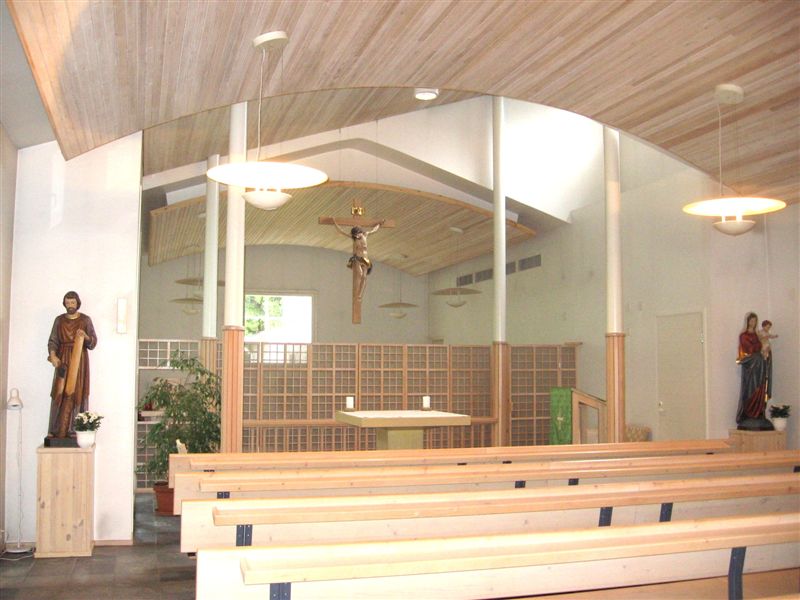
View of the Chapel
“The ceaseless quest for God in solitude is like an exodus in the desert. God draws and guides us there in order to speak to our heart. (cf. Hos. 2,16) Under the impulse of the Holy Spirit, many responded to Christ's invitation to his disciples(Mk. 6:31) and have retired to solitude where they adore the Father and listen to His word.” (Carmelite Constitutions 6:105).
The Mass is the source of all grace and the central event of the day. It is celebrated daily in the monastery.
The Sisters come to the choir seven times a day to pray the Liturgy of the Hours, consisiting of hymns, psalms, reading from Scripture and intercessory prayer.
The Sisters also have two hours of silent prayer daily.
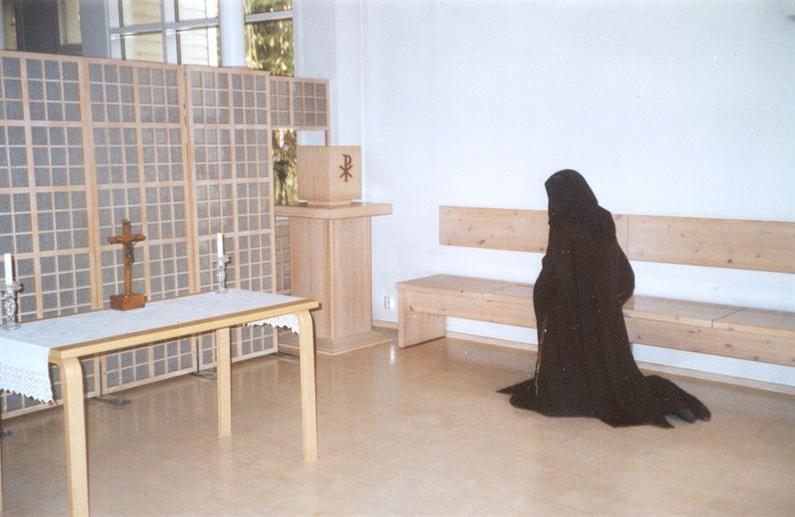
Prayer
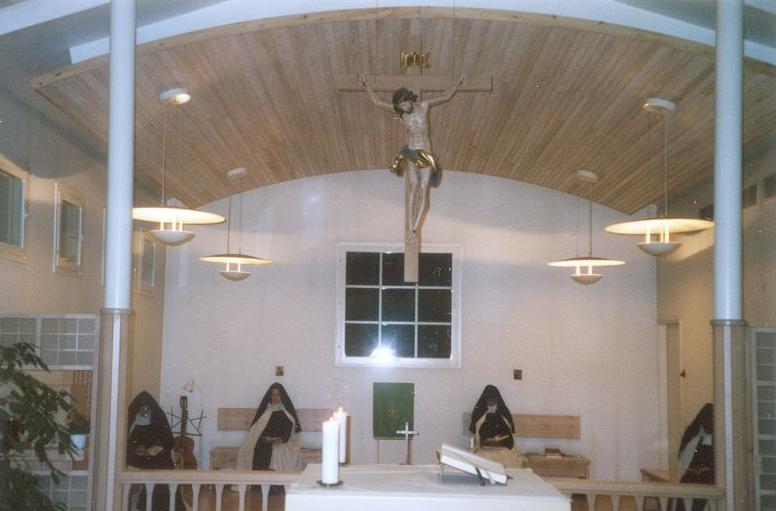
The Mass

The Refectory
